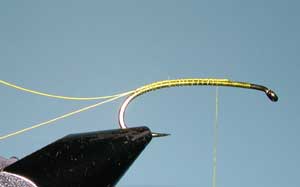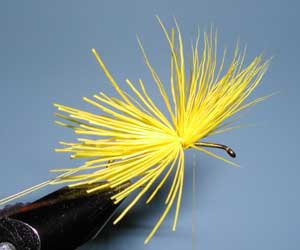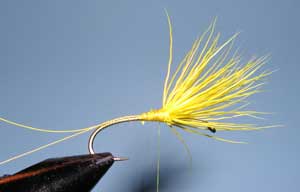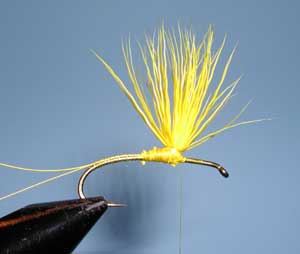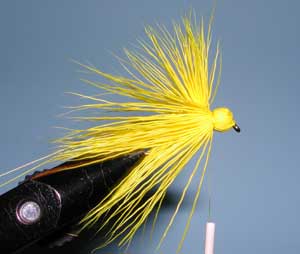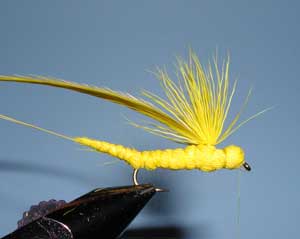Milt’s Hex Paradun – an evening with famous anticipation
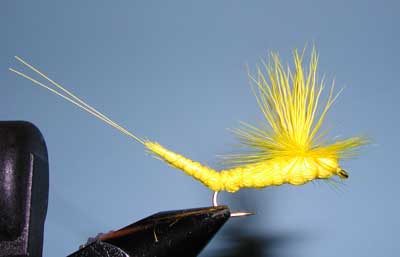
Milt’s Hex Paradun
Tying Instructions
| Materials
to Order Material, click the link |
|
|---|---|
| Hook | TMC 2312 #6-8 |
| Thread | Danville Yellow 6/0 |
| Body | Yellow Elk Hair |
| Tail | 2Stripped Yellow-dyed Quills |
| Wingpost | Yellow Elk Hair |
| Hackle | Yellow-Dyed Hackle |
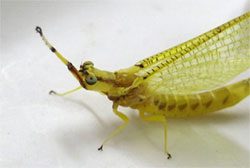
Milt’s Hex Paradun
Milt’s Hex Paradun pattern is basically a bundled-fiber extension body started in front of a bundled wing post. The pattern is attributed to local guide, Milt Jensen from Chester, CA in 1980. This type of pattern can also be seen in paradrake patterns as developed by Swisher and Richards in 1971. This type of pattern provides high floatability but is also fragile. Some tiers will apply a spray fixative to the bundled extension to prevent breakage. You can use Deer Hair or Elk Hair, depending upon the length of the material you need.
Fishing the Hex Hatch
The Hex nymphs emerge from lake bottoms during the night usually just after dusk. Anticipating the hatch, you start by nymph fishing. The hatch does not really start until about 9:00 to 10:00 pm when the nymphs emerge and the duns start to appear. Once they shuck their nymphal case the large yellowish Hex duns pop to the surface and try to become airborne quickly before being devoured. The duns need about a day to mature and molt into an adult. During the following night, the females and males mate in giant swarms and within minutes of mating the females drops to the lake surface to drop her eggs and die. This is when you want to start using this spinner pattern.

